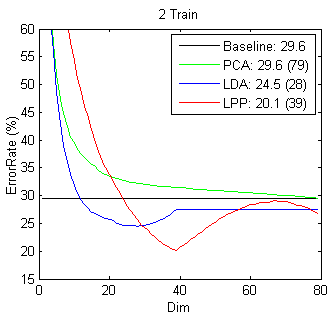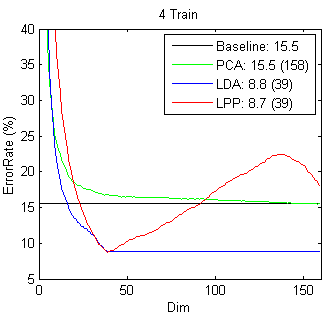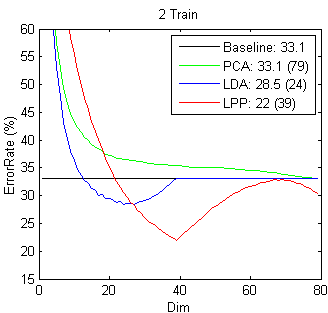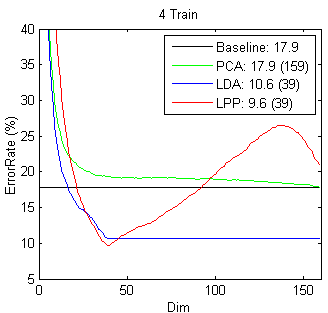In LPP, we need to construct the affinity matrix, we use the following
matlab codes to construct the affinity matrix. Please refer the help of
'constructW.m' for detail explanations for these parameters.
%====================================
options = [];
options.Metric = 'Cosine';
options.NeighborMode = 'Supervised';
options.WeightMode = 'Cosine';
options.bSelfConnected = 1;
options.gnd = gnd_Train;
W = constructW(fea_Train,options);
%=================================
You can also try other graph construction methods and select other weighting schems.
Particularly, you may want to try heat kernel which is supposed to be superior to 0/1
and cosine weights. However, there is a parameter t which needs to be set. In our experience,
LPP is not sensitive to t, so you may empirically set it. When there is a large amount of
training data, you may want to try model selection methods, such as cross validation.
Also, we keep all the non-zero eigenvalues in the PCA step of LPP, i.e.
====================================
options = [];
options.PCARatio = 1;
[Vec,Val]=LPP(fea_Train,W,options);
%=================================
The data is used without further pre-processing.




For more detailed explanations of these experiments, please refer our paper: Deng Cai, Xiaofei He and Jiawei Han, "Using Graph Model for Face Analysis", Technical Report, UIUCDCS-R-2005-2636, UIUC, Sept. 2005



